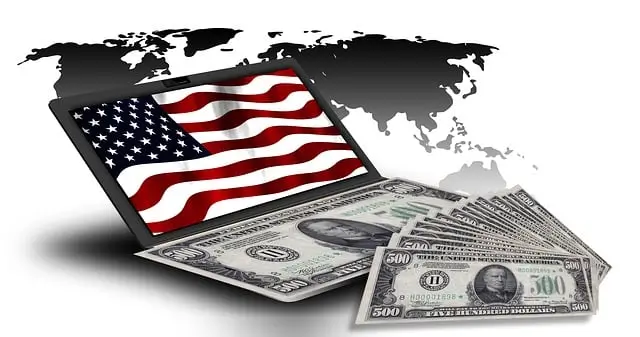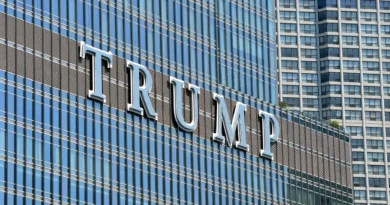The Hidden Democrat Agenda Of USAid Spending
The USAID Spending Controversy: A Closer Look At Taxpayer Money Wasted On Foreign Programs
The Hidden Democrat Agenda Of USAid Spending. In recent years, a growing number of conservative commentators and critics have decried what they see as the misuse of U.S. taxpayer dollars through the United States Agency for International Development (USAID). What began as efforts to promote international development and humanitarian relief has, according to these critics, morphed into a sprawling portfolio of programs that allegedly push a radical social agenda abroad while neglecting America’s strategic interests. With controversies that span from funding diversity initiatives in Europe to projects in regions as diverse as Southeast Asia and the Middle East, the debate over USAID spending has become emblematic of a broader political struggle over the nation’s foreign policy priorities.
Critics contend that many of these expenditures are not only wasteful but also ideologically driven, designed to promote progressive values such as diversity, equity, and inclusion (DEI) and LGBTQ rights—often in countries where such ideas are deeply unpopular or culturally alien. Moreover, they argue that when these projects are exposed, the Democratic Party and mainstream media (MSM) react with disproportionate defensiveness, seeking to cover up or minimize the implications. The stakes, they claim, are high: hidden within these programs lies a realignment of U.S. foreign policy that favors politically correct agendas over the country’s long-standing national security and economic interests.
Below is a detailed examination of some of the most controversial expenditures attributed to USAID, followed by an analysis of the political reactions surrounding them.
The Biggest and Worst Expenditures: A Detailed Breakdown
1. $1.5 Million to Advance Diversity, Equity, and Inclusion in Serbia
One of the earliest and most cited examples is the allocation of $1.5 million to promote diversity, equity, and inclusion (DEI) in Serbia’s workplaces and business communities. Proponents of USAID’s programs argue that such funding helps modernize business practices and promote equal opportunity in transitional economies. However, critics claim that this expenditure is emblematic of a broader ideological agenda—one that aims to impose Western liberal values on nations with deeply rooted traditional cultures. They argue that spending millions of dollars to reshape social dynamics abroad is an overreach that has little to do with tangible economic or humanitarian benefits.
2. $70,000 for the Production of a DEI Musical in Ireland
Perhaps one of the most eyebrow-raising items on the list is the $70,000 reportedly allocated for the production of a DEI musical in Ireland. While the cultural exchange is touted by some as a soft power tool to enhance America’s image abroad, critics are quick to point out that a theatrical production with an explicit focus on diversity and inclusion seems frivolous compared to more urgent developmental needs. They contend that this is not about promoting high culture or mutual understanding, but rather about advancing a specific ideological narrative that may be irrelevant—or even unwelcome—to the local populace.
3. $2.5 Million for Electric Vehicles in Vietnam
In another example, USAID is alleged to have allocated $2.5 million for electric vehicles in Vietnam. On the surface, promoting green technology and reducing carbon emissions is an admirable goal. However, detractors argue that the funding was less about environmental sustainability and more about aligning Vietnam with the green energy policies favored by progressive policymakers at home. Critics assert that while domestic electric vehicle subsidies might help drive innovation and market adoption in the U.S., spending millions abroad on such technology diverts resources from projects that might yield more direct benefits for American taxpayers.
4. $47,000 for a Transgender Opera in Colombia
A more culturally charged example is the reported $47,000 spent on a transgender opera in Colombia. This expenditure has drawn particular ire among conservatives who view it as emblematic of a radical social agenda being exported overseas. For these critics, the funding for an opera focused on transgender issues is not about supporting the arts or fostering international dialogue; it is about using taxpayer dollars to promote a controversial and divisive agenda. They argue that such spending reflects a misalignment of priorities, where ideological experimentation is placed above investments that could address more pressing economic or social challenges.
5. $32,000 for a Transgender Comic Book in Peru
Similarly, USAID’s alleged expenditure of $32,000 to produce a transgender comic book in Peru has sparked outrage among those who believe that the agency is overstepping its mandate. Critics contend that while promoting creative expression can be beneficial, using public funds to specifically highlight transgender themes in a country with its own unique cultural and social dynamics is an act of cultural imperialism. They claim that such projects do little to promote sustainable development or improve living standards, and instead serve as a vehicle for advancing progressive social narratives.
6. $2 Million for Sex Changes and LGBT Activism in Guatemala
Perhaps one of the more provocative items on the list is the allocation of $2 million reportedly dedicated to funding sex changes and supporting LGBT activism in Guatemala. To many detractors, this expenditure is the epitome of ideological excess. They argue that taxpayer dollars should not be used to subsidize procedures or support activism that aligns with a particular political ideology, especially in a country where the cultural and social fabric may not readily embrace such changes. This spending is seen as emblematic of a broader trend where USAID is alleged to prioritize identity politics over concrete developmental outcomes.
7. $6 Million to Fund Tourism in Egypt
Tourism funding is another area where USAID’s expenditures have drawn scrutiny. A reported $6 million allocated to promote tourism in Egypt has been criticized as an example of misplaced priorities. While boosting tourism can indeed generate economic benefits, critics question why such a large sum would be funneled into a sector that seems disconnected from the urgent humanitarian needs often cited as USAID’s core mission. Detractors argue that this expenditure is more about cultivating favorable relations with regimes that might otherwise be adversarial, rather than about helping the people of Egypt directly.
8. Funding for a Nonprofit Linked to Designated Terrorist Organizations
One of the most explosive allegations involves hundreds of thousands of dollars reportedly provided to a nonprofit organization that has been linked—according to some reports—to designated terrorist organizations. Even more troubling for critics is that this funding allegedly continued even after an inspector general launched an investigation. Such claims, if substantiated, suggest not only a profound lapse in oversight but also raise questions about the criteria used to select funding recipients. Critics see this as a stark example of bureaucratic negligence, if not outright complicity, in channeling taxpayer dollars to entities with dubious connections.
9. Millions to EcoHealth Alliance
EcoHealth Alliance, an organization involved in global health research—including projects at the controversial Wuhan lab—has also been a target of criticism. Critics allege that millions of dollars in USAID funding have been awarded to EcoHealth Alliance, thereby linking U.S. taxpayer money to research that may have contributed to global health risks. While supporters of the funding emphasize the importance of scientific research in preventing future pandemics, detractors argue that the financial ties between USAID and organizations involved in contentious research create conflicts of interest that could compromise U.S. national security.
10. Hundreds of Thousands of Meals to al Qaeda-Affiliated Fighters in Syria
Among the most incendiary allegations is that hundreds of thousands of meals provided as humanitarian assistance in Syria ended up in the hands of al Qaeda-affiliated fighters. Critics argue that while humanitarian aid is vital in conflict zones, there must be stringent measures in place to ensure that such assistance does not inadvertently strengthen extremist groups. For those who oppose USAID’s current spending practices, this example underscores the danger of poorly monitored programs that, rather than alleviating suffering, may contribute to destabilization.
11. Funding for Personalized Contraceptive Devices in Developing Countries
Another contentious expenditure involves funding to print personalized contraceptive or birth control devices for use in developing countries. Critics contend that while family planning is an important component of development, the allocation of funds to highly specific projects like personalized contraceptives raises questions about cultural sensitivity and the imposition of Western norms on societies with diverse values. They argue that such spending represents a form of soft coercion—using financial resources to push social agendas that may not align with the priorities or traditions of the recipient countries.
12. Hundreds of Millions for Agricultural Support in Afghanistan
Finally, one of the largest expenditures under scrutiny involves hundreds of millions of dollars spent on irrigation canals, farming equipment, and fertilizer in Afghanistan. Ostensibly intended to boost agricultural productivity and support local livelihoods, critics claim that these funds have also contributed to an unintended—and deeply troubling—consequence: the expansion of poppy cultivation and heroin production, which in turn has bolstered the finances of the Taliban. For detractors, this is perhaps the clearest example of how USAID’s misdirected spending can have far-reaching, destabilizing effects that ultimately undermine U.S. interests.
The Political Backlash: Why Democrats and the Mainstream Media Are on the Defensive
It is not a coincidence that the disclosure of these controversial USAID expenditures has sparked such a fierce reaction from Democrats and the mainstream media. For many critics, the vehement denials and defensive posturing are not simply matters of bureaucratic oversight—they are emblematic of a broader strategy to shield a politically motivated agenda from scrutiny.
Protecting a Liberal Foreign Policy Agenda
Over the past few decades, the Democratic Party has championed a foreign policy rooted in soft power, international cooperation, and the promotion of progressive values abroad. USAID’s funding portfolio—whether it be for cultural initiatives, social inclusion programs, or even controversial humanitarian projects—forms a key pillar of that strategy. As such, any questioning of these expenditures is seen as an attack on the legitimacy of a liberal internationalist agenda. Critics argue that by dismissing or downplaying these expenditures, Democrats and their media allies are effectively trying to insulate their policy framework from political fallout.
Fear of Political Backlash
The timing of these revelations is especially politically charged. With the political climate increasingly polarized, any suggestion that taxpayer dollars are being used to support projects that appear to contradict the interests of American taxpayers is bound to incite outrage among conservative voters. Mainstream media outlets—many of which have traditionally been sympathetic to Democratic policies—may fear that extensive coverage of these controversies could erode public trust in USAID and, by extension, in the broader Democratic foreign policy agenda. Consequently, there is a perceived effort to control the narrative, with critics alleging that the media’s reluctance to thoroughly investigate these claims is part of a calculated cover-up.
The Role of the Establishment and Bureaucratic Interests
Beyond the political rhetoric, there is also a more pragmatic element to the resistance against exposing these expenditures. USAID, like many large governmental agencies, is deeply intertwined with a network of bureaucratic interests, nonprofit organizations, and private contractors. These entities have built institutional momentum around current funding practices. A thorough audit or re-examination of these expenditures could jeopardize established relationships and lead to significant restructuring—changes that would not only disrupt the status quo but could also have substantial political costs for those in power. In this view, the cover-up serves to protect not only an ideological agenda but also entrenched interests that benefit from continued, unchecked spending.
Who Benefits from the Cover-Up and Continued Wasting of Tax Dollars?
When the focus shifts from the specifics of individual expenditures to the broader system, the question arises: Who gains the most from the ongoing cover-up and the continued misallocation of taxpayer dollars?
The Political Elite and the Liberal Establishment
Critics argue that the ultimate beneficiaries are the very political elites who have crafted the liberal internationalist narrative over decades. By channeling funds into programs that support a progressive agenda abroad, these elites secure influence over foreign governments, international institutions, and global public opinion. This influence, in turn, reinforces their power at home. As long as USAID continues to operate under its current mandate, the Democratic Party and its allies can point to a record of international engagement and humanitarian outreach—even if the actual outcomes are hotly contested.
The Bureaucracy and Special Interest Groups
In addition to political leaders, a vast bureaucracy benefits from the continued flow of funds. USAID’s large budget supports countless jobs, contracts, and nonprofit organizations that have become reliant on federal dollars. Many of these groups are well-connected in Washington and have a vested interest in maintaining the status quo. For these entities, any suggestion of mismanagement or ideological bias poses a direct threat to their funding streams and influence. Thus, there is a powerful incentive to deflect criticism and maintain the narrative that these programs are essential for promoting American values and global stability.
The Mainstream Media
Finally, critics claim that parts of the mainstream media stand to gain politically from a muted coverage of these controversies. By focusing on narratives that reinforce the legitimacy of the liberal foreign policy agenda, the media can avoid alienating audiences who are supportive of a progressive internationalist approach. At the same time, a full-scale investigation into USAID’s spending would provide ammunition to conservative critics, potentially undermining years of messaging. In this light, the media’s reluctance to pursue the story aggressively is seen as part of a broader pattern of protecting an ideological status quo.
The Bigger Picture: A Misguided Prioritization of Ideology Over American Interests
Taken together, these controversies illustrate what many critics see as a fundamental shift in U.S. foreign policy. Rather than focusing solely on strategic interests—such as national security, economic competitiveness, or counterterrorism—the current approach places a heavy emphasis on promoting progressive social values abroad. Programs that on the surface aim to modernize economies or foster cultural exchange are, according to these critics, underpinned by an ideological commitment that often appears to disregard the practical needs and cultural sensibilities of the target countries.
This reorientation, they argue, has significant consequences. By diverting billions of dollars to projects that are viewed by many Americans as unnecessary or even counterproductive, the government is not only squandering resources but also undermining the credibility of U.S. foreign aid. Moreover, when these expenditures come to light, the vehement defensive reactions from Democrats and the mainstream media only deepen public suspicion, creating a cycle of mistrust that hampers efforts to reform and improve the system.
The Hidden Democrat Agenda Of USAid Spending
Conclusion: A Call for Transparency and Accountability
The controversies surrounding USAID spending are emblematic of a broader debate about the proper role of government in foreign affairs and the responsibilities that come with managing public funds. For many, the list of controversial expenditures—from funding cultural projects in Europe to supporting initiatives in volatile regions like Afghanistan—represents a blatant misallocation of taxpayer dollars. Critics insist that these funds should be redirected toward projects that yield direct benefits for American interests, such as bolstering national security, promoting economic growth, or providing humanitarian relief in a more accountable manner.
At the heart of the matter is a demand for transparency. The allegations of a cover-up—whereby Democrats and mainstream media are accused of suppressing inconvenient truths—resonate strongly with those who believe that the government has lost touch with the priorities of the American people. By shielding USAID’s controversial expenditures from public scrutiny, political and bureaucratic elites not only protect their ideological agendas but also perpetuate a system that many view as inherently corrupt.
Whether one subscribes to these claims or sees the expenditures as necessary investments in global stability, one point remains clear: the debate over USAID’s spending is far from over. For those who believe that the current system wastes precious taxpayer dollars on dubious projects while advancing a radical agenda, the call is simple—a full audit, greater accountability, and a reexamination of priorities are urgently needed.
Ultimately, this controversy is more than just a bureaucratic or policy dispute; it is a reflection of a deeper ideological battle over America’s role in the world. As long as the funding decisions remain opaque and the reactions from the Democratic establishment and mainstream media continue to be perceived as defensive cover-ups, the demand for reform will only grow louder. Taxpayers deserve to know where their money is going, and if the evidence points to mismanagement or ideological bias, then the time for transparency and accountability is now.
Wake Up America, Before It’s Too Late !
Disclaimer: The perspectives and claims presented in this post reflect a particular political viewpoint and are based on interpretations of reported expenditures and related controversies. Many of these claims are disputed by USAID officials and other experts who argue that these programs serve legitimate developmental and diplomatic purposes. Readers are encouraged to seek out multiple sources and viewpoints to form a well-rounded understanding of this complex issue.




